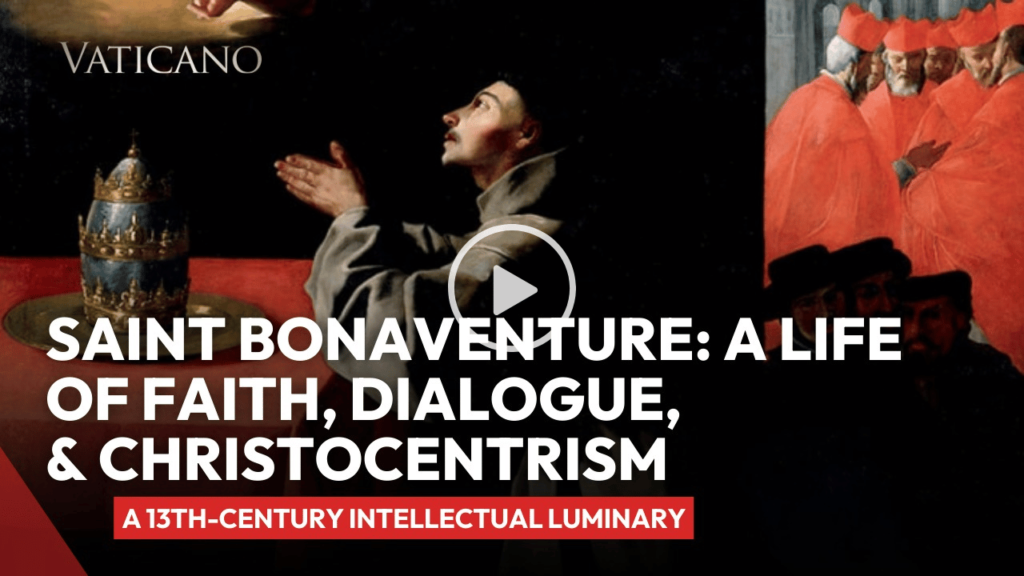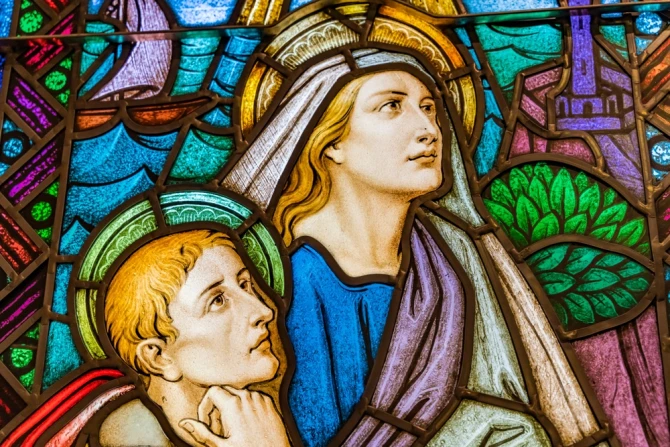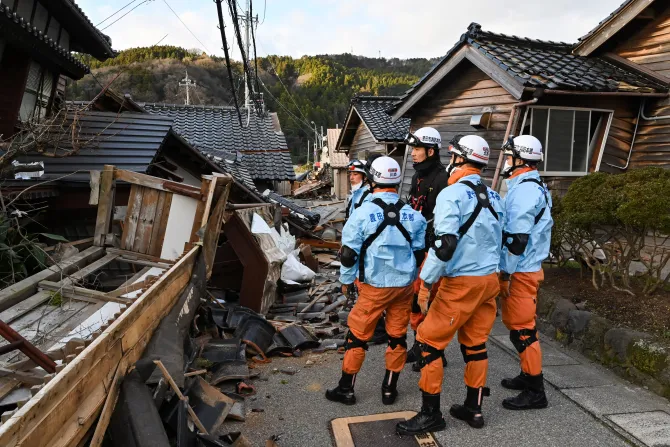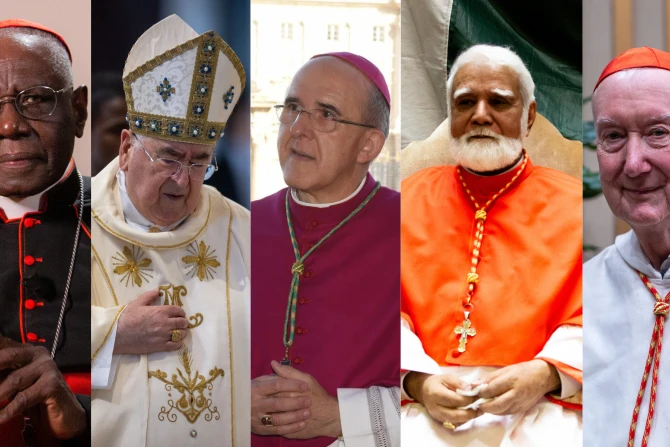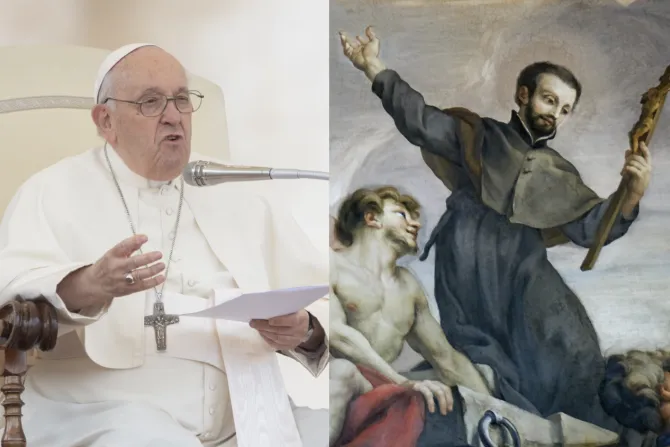Matthew Santucci sat down with Father Carmine De Fillipis, OFM Cap., in the convent of the Order of Friars Minor in Viterbo, to discuss the importance of St. Bonaventure’s legacy. St. Bonaventure of Bagnoregio was one of the leading theologians of the 13th century who, through his numerous theological works and his governance of the Franciscan order, was able to navigate a divided ecclesial environment and bring stability to the Franciscan order.
Father Carmine De Fillipis: Peace and all good: our Franciscan greeting.
Matthew Santucci: Peace and all good! Can we say that St. Bonaventure gave the Franciscans a new character as “the second founder” of the order?
Father Carmine De Fillipis: The founder is undoubtedly St. Francis of Assisi, but he was a charismatic; he was neither a theologian nor a jurist. St. Bonaventure’s genius was precisely that of elaborating Franciscan spirituality, living it first for himself and then systematizing it in appropriate theological forms, so from it would derive a useful doctrine for the friars and for the entire Christian world. So, St. Bonaventure is considered a bit like the second founder of the Order of Friars Minor, not in the sense that he is the founder, but in the sense that he systematized the enormous experience of St. Francis and of his first companions in an appropriate theology.
Matthew Santucci: It was St. Bonaventure who introduced a new style of governance to order because at that time there were so many fractions within the order. Can you speak a little about these fractions, explaining why there was this division?
Father Carmine De Fillipis: St. Bonaventure was elected Minister General on February 2, 1257. He taught in Paris, but the friars wanted him to be their Minister General, the head of the order, an order which was already enormous, it numbered more than 30,000 friars and then they were scattered in all parts of the world, they were already in China, Mongolia, at the courts of kings, in missions, etc.
The generalate was of enormous importance, and the governance of St. Bonaventure lasted for 17 years, a very long time. He solved two great problems that undermined the unity of the order. Undoubtedly, the first problem was that of the different interpretation of the rule of St. Francis, who was rigorist. The so-called spirituals were, instead, more open to tolerant conceptions, above all in matters of poverty and penance.
He makes a wise synthesis by writing and publishing a biography, which was later considered the official one of the order, the so-called “Leggenda Maior”. There is also an edition for choral use, much more restricted and shorter, called “Leggenda Minor”. By not only putting the previous regulations into writing, but by revisiting and rearranging them according to an iron logic and we have the first text of the constitutions, the so-called Narbonne Constitution of 1260 and 1263. Bonaventure’s importance as a legislator is indisputable, because he managed to solve the problem of the unity of order.
The second problem was precisely that of regulating the Franciscan ideal in a very balanced way, always proposing with great purity this very demanding and very radical ideal of evangelical life. But also, inspired by St. Francis, he also wrote a pamphlet – which some his masterpiece – the so-called “Itinerarium mentis in Deum” of 1259, which is a powerful, extraordinary ascetic, philosophical, theological, and mystical synthesis.
It is an extremely concise treatise and it outlines the path for the sanctification of any friar, and therefore also of any person. If you want to refer to the spirituality of St. Francis, then Bonaventure’s role is enormous. He managed to recompose, not without problems and conflicts, the anarchic situation of the order in his time and to give it an ideality, founded on a very solid theology and in such a way that anyone could have lived the rule of St. Francis in a sanctifying and authentic way.
Matthew Santucci: We certainly see with these writings this notion that the Church is an organism that evolves. Can you explain this idea of progress and renewal, especially within the historical context of the 13th century and how that same spirit of progress is also applicable today?
Father Carmine De Fillipis: Yes, the objective truth is always the same; it is immutable, identical and in this regard the Church possesses all of this truth. It must also be said that the awareness that the Church has this Depositum fidei grows over the centuries, grows over the millennia and applies to the various changing historical situations that the Church experiences. St. Bonaventure is very convinced that the Church is always the same and to that end he condemns a spiritual doctrine that was spreading, especially among the Franciscans, namely that of Gioacchino da Fiore, an abbot who lived about a century before. Da Fiore theorized the end of the Church of Jesus Christ and the advent of the Church of the Holy Spirit. Here, we see Bonaventure against this charismatic movement to the bitter end; he rails against it to warn the friars against this dangerous tendency.
St. Bonaventure reiterates that Jesus Christ is always the same, yesterday and today and thus so is his Church. But, at the same time, based on the figure of the great holiness of St. Francis of Assisi, he theorizes, and also spreads, the idea that Church over the long course of the centuries, evolves in the understanding of this truth that is Jesus. St. Francis was undoubtedly an architect of great renewal because he knew how to take the Gospel, which is always the same, and live it, reincarnating it, one could almost say, in the changed conditions of the times, his time was the Middle Ages. This is a criterion that also applies to us and applied to the Second Vatican Council, in fact, what was the Council if not the strong proposal for a renewal in the sense of a deepening and greater awareness of the heritage of the deposit of faith that the Church has always had.
Therefore, in the Church – and this is according to Pope Benedict XVI – there is the hermeneutic, neither of opposition nor revolution, but of continuity.
Matthew Santucci: You have already talked a little about his book, “Itinerarium mentis in Deum” and how through the senses we can understand God. Certainly, there is also this sense of beauty, that is, through beauty, we experience God. Can we say that for St. Bonaventure beauty is a fundamental component for faith? In which way can we understand this sense of beauty?
Father Carmine De Fillipis: Beauty is one of the transcendental categories; to say that a thing is beautiful is synonymous with saying that a thing is true and good. There are notes of the omnipresent in everything that exists. So, beauty is an argument or a characteristic, an almost omnipresent structure of being. As such, we cannot ignore it, if we want to have a complete picture of what it is, of what exists. St. Bonaventura greatly develops the doctrine of the external and internal senses.
And in a particular way, referring also to St. Francis of Assisi, he greatly underlines the importance of contemplating the creation of nature. So much so that in the first two chapters, the first 2 degrees of ascent to God described in the “itinerarium mentis in Deum”, concern precisely the study, vision and contemplation of nature. All the friars are invited to see in every natural phenomenon a step to ascend towards God, who is its creator. But, also in every phenomenon, seeing something of the divine in it, therefore everything is a means for, but also an occasion within which, there is the possibility of a contemplative reference to God. It is an exercise that everyone can do.
Matthew Santucci: In your opinion, did St. Bonaventure bring something to the papacy? Following the conclave that elected Pope Gregory X, the pope gave St. Bonaventure the task at the Second Council of Lyon to make a union between the Latin and Greek Churches. So, did that his own theology have a certain influence on the papacy and on the Council?
Father Carmine De Fillipis: Without a doubt. Just read the acts and interventions of that Council, especially one that Bonaventure himself had in the second session. So, he divulges something of his great philosophical or theological doctrine precisely in this regard. The aim was to rediscover unity with the Greek Church and the Council then succeeded, even if it lasted for a short time.

